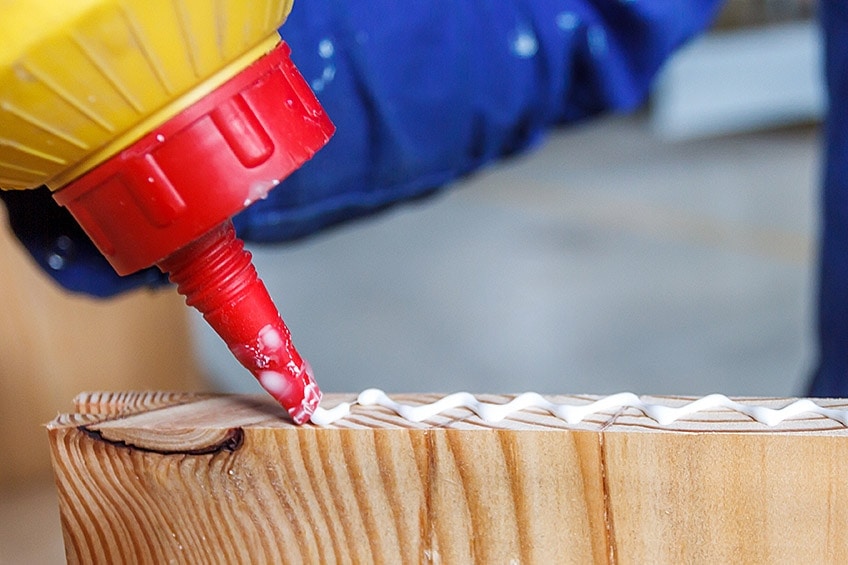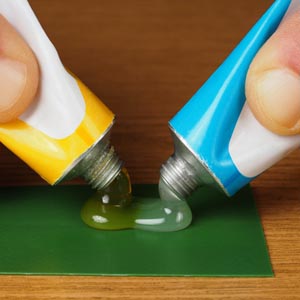 source: resin-expert.com
source: resin-expert.comPolyurethane is the overall best glue for PETG prints. However, other adhesives can provide better results in specific conditions, so you should choose one based on your needs.
As mentioned before, polyurethane is a versatile glue that can adhere to almost anything. What’s more, this glue is often waterproof, so you don’t need to worry about getting your print wet.
Another great feature of polyurethane is its average drying time. This way, you have enough time to align the parts correctly and fix them until the glue dries. This characteristic makes the whole process of gluing so comfortable and stress-free.
Gorilla Original Glue and Franklin Polyurethane Glue are the two best brands of polyurethane glues.
The only drawback of polyurethane gules is the extra added thickness that may become a problem in precise circumstances.
You can use polyurethane to also glue other filament materials like Nylon, ABS, and PLA.
 source: resin-expert.com
source: resin-expert.com
Cyanoacrylate is also a good glue for PETG prints. This glue is also known as CA glue or superglue.
Superglue has a short setting/drying time. It can set in seconds with the help of a dedicated accelerator. It’s also very versatile, though it’s not the most durable glue on the market.
This glue is available in gel and liquid forms. The liquid form is perfect for precise applications, and it leaves almost no bond lines. However, you should align the two pieces quickly and correctly because this glue sets too fast. The gel form is better when it comes to filling cracks.
Gorilla Super Glue is the most popular superglue in the market.
Unfortunately, superglue is not as persistent as polyurethane glues. It’s also very brittle, so it may easily break with an impact, but it’s satisfactory for most aesthetic applications.
Fast Cure time can also be a good plus if you are precise enough.
Silicon glues can create pretty strong bonds and are easy to use. Many silicon glue brands need about a couple of hours to cure.
Permatex 81158 Black Silicone Adhesive is a suitable silicon glue for printed parts.
The main drawback of silicon glues, similar to polyurethane, is that you need to put a thick layer on the parts for proper bonding. They can also adhere to almost any object.
 source: adhesives.org
source: adhesives.org
Technically, epoxy isn’t a type of glue, though it’s a great way to bond plastics, and it works fine with PETG.
The versatility and durability of epoxy are usually more than enough for many applications. However, working with epoxy is kind of tricky.
When you buy epoxy, it usually comes with another separate container named hardener. You then mix epoxy with a hardener in a specific ratio. After mixing, you can apply it to the desired surfaces. Another usage of epoxy is that you can fill cracks or some holes with it.
The curing time of different epoxy products can be various. Some epoxies cure in five minutes while others need more time. Also, some epoxies can be cured instantly using UV light. You need to read the manuals to know the exact ratio and conditions of your epoxy.
It’s good to know that acetone doesn’t work on PETG, so any acetone-based solvent or glue-like plumber’s cement is useless against PETG.

Glues work best when the surfaces are clean and flat. So it would be best if you cleaned the surfaces from dust and oil before using your glue; Using sandpapers to smooth the surfaces is also recommended.
Make sure the parts are fixed in their proper positions if the curing process is slow.
Many glue types are flammable, so it’s better to use them outdoors or in a fine ventilated room. You should read the manual and safety instructions of each product before using it.
However, bonding with epoxy is different. It’s not necessary to have a flat surface, but oil can still decrease the adhesion.
Gluing printed parts can alter their functionality or beauty. By using the right adhesives, you can maintain their functionality. You can also lessen the effect of the glue on beauty by doing some post-processing.
Applying an epoxy resin to PETG parts can cover the print’s whole body with a thin layer. This way, Resin will eliminate the roughness of the surface. To do that, you can use a brush and cover the object with a very thin layer of epoxy.
Another excellent method is to use sandpaper to smooth and finish the PETG printed parts. However, using sandpaper alone won’t solve the problem.
The best approach is to smooth the surfaces first and then apply a thin layer of epoxy.